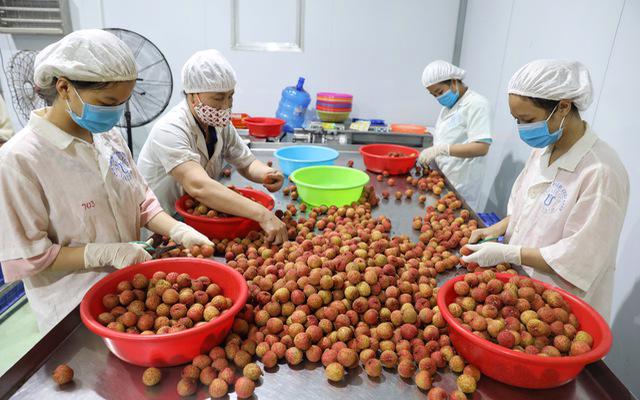 Economy
Economy

.jpg) |
| Workers at a food processing plant in Hà Nội. - VNA/VNS Photo Phương Anh |
HÀ NỘI - Hà Nội has the potential to become a processing hub for high-quality agricultural products, according to policymakers and business leaders.
A development plan for the capital until 2045, with a vision to 2065, highlighted strong agricultural export products, particularly spices. The city's cash crops were said not to require a large cultivating area but a high standard of production and processing, which has been identified as a solid foundation for penetration of foreign markets.
Trần Văn Hiếu, director of an agriculture firm based in Hà Nội, said his company specialised in processing organically-grown spices from plants like ginger, turmeric, cinnamon, anise, garlic, chilli and lemongrass, mainly sourced from northern provinces such as Cao Bằng and Hà Giang.
"We process hundreds of tonnes of dried cinnamon, dried anise, fresh ginger, dried turmeric and fresh bird's eye chilli, most of which are exported to the US, Europe, the Middle East, South Korea and Japan," said Hiếu.
VietGAP products, such as water spinach, could fetch more than three times more than in the domestic market once successfully exported.
Nguyễn Văn Minh, director of an agriculture company with a cultivation area of 15 hectares under VietGAP standards producing mustard greens for South Korea and Taiwan (China) said tight quality control is the key to brand-building in both the domestic and foreign markets.
In addition, continuous efforts to improve product quality and enter additional markets have helped increase farmers' incomes, and residents' living standards as well as contributing to sustainable agricultural economic development.
Nguyễn Xuân Đại, director of the city's agriculture and rural development department, said when agricultural production in the city remains largely small-scale, the total cultivation is quite large with a significant portion of it dedicated to strong export items including cinnamon, anise, spices (garlic, ginger, chilli), green tea, black tea, rice, shiitake mushrooms and wood ear mushrooms.
There were nearly 70 companies located in the city with export markets including all major markets in the EU, the US, the UK, South Asia, Southeast Asia and the Middle East. In recent years, they have invested in post-harvest preservation and processing technology to extend product shelf life and ensure product quality when reaching international consumers. In addition, they have been proactive in participating in international fairs, exhibitions, and trade promotion activities helping companies expand their networks and seek new cooperation opportunities.
According to the department, Hà Nội has secured 16 product codes and has four packaging facilities for a combined total capacity to export 30-50 tonnes of product daily. Other products included more than 7,000 hectares of Japonica rice, over 5,000 hectares of various vegetables, 3,200 hectares of pink banana and 50 hectares of organically-grown vegetables.
The department urged the capital city's agriculture sector has the potential to become processing, transporting and exporting to foreign markets and meeting international standards. In the future, the city's agricultural planning will focus on developing urban agriculture linked with eco-tourism, a moderate production model in size but suitable for Hà Nội's land fund.
Businesses have long advised the city to pick several strong products to focus the city's resources on. Hoàng Vĩnh Long, secretary-general of the Vietnam Tea Association said there are 59 companies in the city producing, processing, and exporting green and black tea with an annual output of over 20,000 tonnes, accounting for about 16-18 per cent of the country's tea export volume.
However, many of the city's tea-growing areas still failed to meet export quality standards, stressing the need to improve varieties and apply standardised production processes to improve product safety and quality. VNS